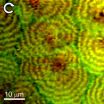(Press-News.org) Researchers from North Carolina State University and the University of Oregon have found a way to exploit cloud-based Web browsers, using them to perform large-scale computing tasks anonymously. The finding has potential ramifications for the security of "cloud browser" services.
At issue are cloud browsers, which create a Web interface in the cloud so that computing is done there rather than on a user's machine. This is particularly useful for mobile devices, such as smartphones, which have limited computing power.The cloud-computing paradigm pools the computational power and storage of multiple computers, allowing shared resources for multiple users.
"Think of a cloud browser as being just like the browser on your desktop computer, but working entirely in the cloud and providing only the resulting image to your screen," says Dr. William Enck, an assistant professor of computer science at NC State and co-author of a paper describing the research.
Because these cloud browsers are designed to perform complex functions, the researchers wanted to see if they could be used to perform a series of large-scale computations that had nothing to do with browsing. Specifically, the researchers wanted to determine if they could perform those functions using the "MapReduce" technique developed by Google, which facilitates coordinated computation involving parallel efforts by multiple machines.
The research team knew that coordinating any new series of computations would entail passing large packets of data between different nodes, or cloud browsers. To address this challenge, researchers stored data packets on bit.ly and other URL-shortening sites, and then passed the resulting "links" between various nodes.
Using this technique, the researchers were able to perform standard computation functions using data packets that were 1, 10 and 100 megabytes in size. "It could have been much larger," Enck says, "but we did not want to be an undue burden on any of the free services we were using."
"We've shown that this can be done," Enck adds. "And one of the broader ramifications of this is that it could be done anonymously. For instance, a third party could easily abuse these systems, taking the free computational power and using it to crack passwords."
However, Enck says cloud browsers can protect themselves to some extent by requiring users to create accounts – and then putting limits on how those accounts are used. This would make it easier to detect potential problems.
The paper, "Abusing Cloud-Based Browsers for Fun and Profit," will be presented Dec. 6 at the 2012 Annual Computer Security Applications Conference in Orlando, Fla. The paper was co-authored by Vasant Tendulkar and Ashwin Shashidharan, graduate students at NC State, and Joe Pletcher, Ryan Snyder and Dr. Kevin Butler, of the University of Oregon. The research was supported by the National Science Foundation and the U.S. Army Research Office.
### END
Researchers identify ways to exploit 'cloud browsers' for large-scale, anonymous computing
2012-11-28
ELSE PRESS RELEASES FROM THIS DATE:
Graphite experiment shines new light on giant planets, white dwarfs and laser-driven fusion
2012-11-28
An international team led by researchers from the University of Warwick and Oxford University is now dealing with unexpected results of an experiment with strongly heated graphite (up to 17,000 degrees Kelvin). The findings may pose a new problem for physicists working in laser-driven nuclear fusion and may also lead astrophysicists to revise our understanding of the life cycle of giant planets and stars.
The researchers were attempting to get a better understanding about how energy is shared between the different species of matter, especially, how it is transferred from ...
Family's economic situation influences brain function in children
2012-11-28
Children of low socioeconomic status work harder to filter out irrelevant environmental information than those from a high-income background because of learned differences in what they pay attention to, according to new research published in the open access journal Frontiers in Human Neuroscience.
Numerous studies in the past few years have begun to reveal how poverty affects brain development and function. In 2008, Amedeo D'Angiulli of Carleton University in Ottawa, Canada and his colleagues used electroencephalography (EEG) to measure the brain wave patterns associated ...
Virginia Tech scientists discover record-breaking black hole energy blast
2012-11-28
Virginia Tech physics researchers have discovered a quasar with the most energetic outflow ever, a finding that may answer questions about how the mass of a galaxy is linked to its central black hole mass and why there are so few large galaxies in the universe.
Researchers studied the quasar known as SDSS J1106+1939 in great detail using the European Southern Observatory's Very Large Telescope in Paranal, Chile – the world's most advanced visible-light astronomical observatory, and found the most energetic quasar outflow ever discovered.
The rate that energy is carried ...
Attitudes towards security threats uncovered
2012-11-28
New research has revealed a significant gap between what the government claims are the biggest security threats facing the UK and the fears of the population.
Terrorism is not perceived as the most important threat to everyday life despite claims by policy makers.
Politics researchers at the Universities of Warwick and Exeter led detailed focus groups across the UK and conducted a nationwide survey as part of an Economic and Social Research Council (ESRC) funded project which looked at public attitudes towards security threats.
Since 2005, key objectives of successive ...
Young adults more likely to smoke cannabis than drink before driving, 2011 CAMH Monitor survey shows
2012-11-28
For Immediate Release – November 28, 2012 – (Toronto) – Most adults are drinking responsibly, and fewer are smoking or using illicit substances – but several areas of concern were found in the 2011 CAMH Monitor survey of Ontario substance use trends, released today by the Centre for Addiction and Mental Health (CAMH).
"More young adults are reporting that they drive within an hour of using cannabis - even more than those who report drinking and driving," says Dr. Robert Mann, CAMH Senior Scientist and lead researcher. "Yet the risks of doing so are significant." Nine ...
Rhode Island Hospital: Adult entertainment workers likely to benefit from health care intervention
2012-11-28
PROVIDENCE, R.I. – It probably won't come as a surprise to hear that most adult entertainment club workers – exotic dancers and other female club employees such as bartenders, waitresses and hostesses – don't have great medical benefits. The nature of their work makes them easy prey for repeated unwanted sexual advances and behavior. Add in the prevalence of risky sexual behavior and substance abuse and you've got a perfect storm for unchecked health risks.
To measure the incidence of substance abuse and risky sexual behavior as they related to healthcare, Esther Choo, ...
NIST experiments challenge fundamental understanding of electromagnetism
2012-11-28
A cornerstone of physics may require a rethink if findings at the National Institute of Standards and Technology (NIST) are confirmed. Recent experiments suggest* that the most rigorous predictions based on the fundamental theory of electromagnetism—one of the four fundamental forces in the universe, and harnessed in all electronic devices—may not accurately account for the behavior of atoms in exotic, highly charged states.
The theory in question is known as quantum electrodynamics, or QED, which physicists have held in high regard for decades because of its excellent ...
Outside a vacuum: Model predicts movement of charged particles in complex media
2012-11-28
Picture two charged particles in a vacuum. Thanks to laws of elementary electrostatics, we can easily calculate the force these particles exert upon one another, and therefore predict their movements.
Submerge those particles in a simple medium — say, water — and the calculation grows more complex. The charged particles' movements influence the water, which in turn may slow, speed, or otherwise alter the particles' paths. In this environment a prediction must also consider the water's reaction, or its dielectric response.
But in real biological and material systems, ...
The music of the silks
2012-11-28
CAMBRIDGE, MA -- Pound for pound, spider silk is one of the strongest materials known: Research by MIT's Markus Buehler has helped explain that this strength arises from silk's unusual hierarchical arrangement of protein building blocks.
Now Buehler — together with David Kaplan of Tufts University and Joyce Wong of Boston University — has synthesized new variants on silk's natural structure, and found a method for making further improvements in the synthetic material.
And an ear for music, it turns out, might be a key to making those structural improvements.
The work ...
Mix masters: NIST scientists image the molecular structure of polymer blends
2012-11-28
Using an enhanced form of "chemical microscopy" developed at the National Institute of Standards and Technology (NIST), researchers there have shown that they can peer into the structure of blended polymers, resolving details of the molecular arrangement at sub-micrometer levels.* The capability has important implications for the design of industrially important polymers like the polyethylene blends used to repair aging waterlines.
Polyethylene is one of the most widely produced and used polymers in the world. It's used in many familiar applications—milk bottles, for ...


